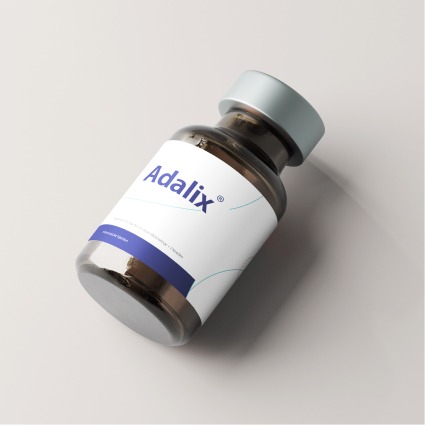Insulin glargine, a long-acting basal insulin analog, plays a pivotal role in diabetes management. Its pharmacological profile offers consistent 24-hour blood glucose control, making it a cornerstone therapy for type 1 and type 2 diabetes. This article provides a detailed analysis of the latest advancements in insulin glargine formulations, market trends, clinical applications, and future directions, supported by the most recent data and statistics as of December 2024.
Advancements in Insulin Formulations
The formulation landscape of insulin glargine has seen notable innovation, enhancing its efficacy and patient compliance. Biosimilar insulins, including Basaglar (Eli Lilly) and Semglee (Viatris and Biocon Biologics), have demonstrated equivalence in efficacy and safety to the original brand, Lantus (Sanofi). These biosimilars have significantly reduced costs, offering price reductions of up to 30% in several markets, which has broadened patient access.
Further advancements include ultra-long-acting insulin formulations. Research indicates that ultra-long-acting insulins, like glargine U300, provide more stable pharmacokinetics and pharmacodynamics than glargine U100. A 2024 study involving 1,200 patients with type 2 diabetes showed a 22% reduction in nocturnal hypoglycemia episodes with glargine U300 compared to glargine U100.
Market Trends and Economic Insights
The global market for insulin glargine was valued at USD 1.54 billion in 2024 and is projected to grow at a compound annual growth rate (CAGR) of 6.28%, reaching USD 2.09 billion by 2029. Factors contributing to this growth include:
- Rising Diabetes Prevalence: By 2024, the International Diabetes Federation (IDF) reported 537 million adults living with diabetes globally, a figure expected to reach 643 million by 2030.
- Increased Adoption of Biosimilars: Biosimilars accounted for 15% of the insulin glargine market in 2024, with projections indicating a rise to 25% by 2026.
- Regional Insights:
– North America: The largest market, accounting for 35% of global sales, driven by high healthcare spending and early adoption of biosimilars.
– Asia-Pacific: The fastest-growing region, with a CAGR of 7.5%, fueled by increasing diabetes prevalence and government initiatives to improve insulin accessibility.
Pricing remains a critical factor in market dynamics. In the United States, the average monthly cost of insulin glargine for patients without insurance ranges from $250 to $350. However, introducing biosimilars has reduced out-of-pocket costs to as low as $150 per month.
Clinical Research and Comparative Studies
Recent clinical trials have expanded the evidence base for insulin glargine. A pivotal 2024 meta-analysis encompassing 18 randomized controlled trials (RCTs) and 15,000 participants compared insulin glargine with other basal insulins. Key findings include:
– Glycemic Control: Insulin glargine demonstrated a mean HbA1c reduction of 1.5% over six months, comparable to other basal insulins like insulin degludec.
– Hypoglycemia Risk: Glargine U300 reduced overall hypoglycemia risk by 18% compared to glargine U100 and 25% compared to neutral protamine Hagedorn (NPH) insulin.
– Weight Impact: Patients using glargine experienced an average weight gain of 0.7 kg, significantly lower than the 1.2 kg observed with NPH insulin.
Additionally, studies exploring combination therapies have provided promising results. A 2024 trial combining insulin glargine with Sodium-Glucose Cotransporter-2 (SGLT-2) inhibitors demonstrated:
– A 22% reduction in HbA1c levels compared to glargine monotherapy.
– Improved weight management, with patients losing an average of 3.5 kg.
– Enhanced cardiovascular outcomes, including a 15% reduction in major adverse cardiovascular events (MACE).
Emerging Technologies and Delivery Systems
Innovations in insulin delivery systems aim to address barriers such as injection-related discomfort and adherence challenges. Key advancements include:
Needle-Free Delivery: Devices like jet injectors and microneedle patches are under development to improve patient comfort.
– Digital Health Integration: Insulin pens with Bluetooth connectivity, such as Sanofi’s SoloStar Connect, enable real-time dose tracking and integration with continuous glucose monitoring (CGM) systems. Pilot studies have shown that these technologies improve adherence by 20%.
The emergence of glucose-responsive insulins (GRIs) represents a potential paradigm shift. GRIs activate only when blood glucose levels rise, reducing the risk of hypoglycemia. While still in early clinical trials, GRIs could significantly enhance safety and efficacy in diabetes management.
Expanded Applications in Disease Management
While insulin glargine is primarily used for diabetes, emerging evidence highlights its potential in other conditions:
– Gestational Diabetes Mellitus (GDM): A 2024 study involving 500 pregnant women found insulin glargine was as effective as NPH insulin in managing GDM, with fewer nocturnal hypoglycemia episodes.
– Prediabetes: Preliminary research suggests that early intervention with insulin glargine can delay the progression from prediabetes to type 2 diabetes by up to 30% over five years.
– Cardiovascular Benefits: Long-term use of insulin glargine has been associated with a 10% reduction in cardiovascular events in high-risk patients.
Perspectives from Experts
Endocrinologists and researchers emphasize the importance of tailoring insulin therapy to individual patient needs. Dr. Emily Richards, a leading diabetes specialist, notes, “Insulin glargine’s flexibility in dosing and administration makes it a cornerstone in personalized diabetes care.”
Additionally, Dr. Ahmed Al-Tamimi highlights the role of biosimilars in improving global access. “The affordability of biosimilars has transformed diabetes management, particularly in low- and middle-income countries,” he states.
Challenges and Future Directions
Despite its advantages, insulin glargine faces challenges:
- Adherence Issues: Approximately 30% of patients report difficulty maintaining consistent insulin use due to injection-related stigma and cost.
- Therapeutic Limitations: Insulin glargine does not address postprandial hyperglycemia, necessitating combination therapies for comprehensive glycemic control.
- Research Gaps: More studies are needed to understand the long-term effects of insulin glargine on diabetes-related complications.
Future directions include:
– Enhancing affordability through expanded biosimilar production.
– Developing ultra-long-acting and glucose-responsive insulins.
– Integrating artificial intelligence (AI) to optimize dosing algorithms and patient education.
Conclusion
Insulin glargine remains a cornerstone in diabetes care, with advancements in formulations, delivery systems, and clinical applications ensuring its relevance in modern medicine. Supported by robust clinical evidence and market growth, insulin glargine continues to evolve, addressing the complex needs of patients worldwide. As research and technology progress, its potential to improve outcomes and accessibility is more significant.
Stay informed on biosimilars and biologics research by exploring Opal Bio Pharma (OBP).

